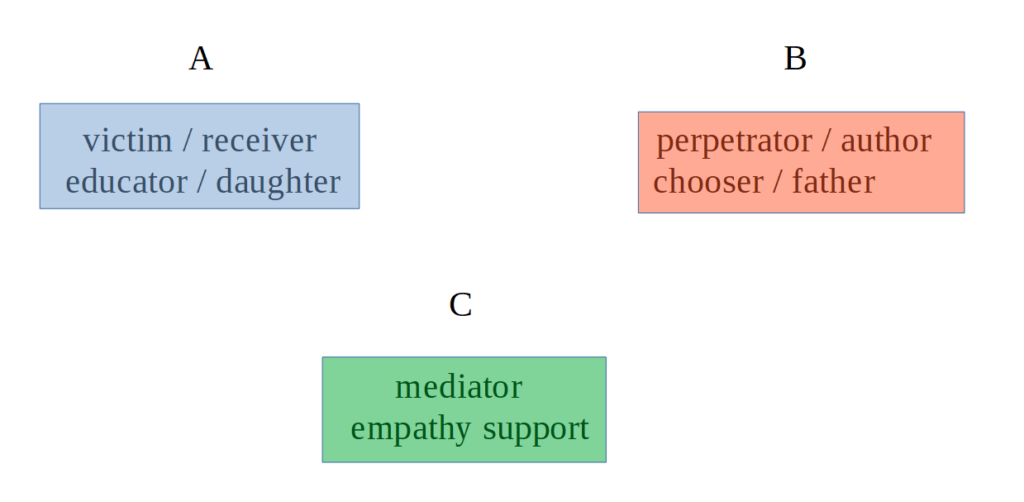1. Empathy for the victim (impact of action on the victim)
2. Mourning of the perpetrator (feelings of perpetrator when seeing impact of actions on victim)
3. Empathy for the perpetrator (needs of perpetrator when deciding to do the harmful action)
4. Looking for strategies to better meet needs for both sides in the future

This process is described by Marshall Rosenberg here: friends-of-marshall-rosenberg.uk/processes/
He illustrates the process by telling about a healing/reconciliation between daughter and her father, who had sexually abused her.
The Four Steps of the Process in More Detail
B did something or said something that stimulated hurt for A
It is important to stay with one event, as much as possible.
1. Empathy for A
1. A expresses his/her pain about the impact of the hurtfull action that B did.
B gives empathy to A.
If B cannot give empathy, we need C.
2. Honesty of B about recognizing how their actions impacted A – Giraffe mourning
2. B expresses his/her feelings when seeing how his/her actions impacted A
When B expresses judgments instead of feelings, help B to stay with feelings about seeing impact!
Again mediator C can help B to get in touch with these painful feelings.
“I want you to really suffer!” (meaning: I want you to face the pain in your heart)
3. Empathy for the needs behind B’s decision to commit the harmful action
3. Help B to get clear which needs they intended to fulfill with their action at decision time.
When B expresses judgments about the action, help B to return to the original needs!
Again mediator C can help B to get in touch with these painful feelings.
4. Looking for strategies that work for both A and B
4. Seeing the needs of B that led to the deed and seeing the unmet needs that A had because of the deed, A and B look for strategies how to better meet needs in the future for both sides.
